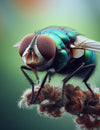Introduction
Cockroach infestations are a common household problem that many people face. To combat these resilient pests, various pest control methods are employed, with cockroach killer gels being a popular choice. However, concerns often arise about the safety of these products for humans. In this blog post, we'll delve into the key aspects of cockroach killer gel, exploring whether it poses any harm to humans and what precautions you should take.
Understanding Cockroach Killer Gel:
Cockroach killer gel is a pest control product designed to attract and eliminate cockroaches. It typically contains active ingredients that are toxic to roaches but are intended to have minimal impact on humans and pets when used correctly. The gel is applied in areas where cockroaches are likely to feed, and the insects ingest the gel, leading to their demise.
Common Ingredients in Cockroach Killer Gels:
-
Fipronil: This is a widely used insecticide that disrupts the central nervous system of insects. While it is effective against cockroaches, it is generally considered safe for humans and pets when used according to instructions.
-
Hydramethylnon: Another common ingredient, hydramethylnon, interferes with the energy production process in cockroaches. It is designed to have low toxicity in mammals, making it safer for household use.
-
Boric Acid: Some cockroach gels contain boric acid, which is a natural insecticide. Boric acid is generally considered safe for humans and pets but should be used cautiously, especially around children.
Precautions and Safety Measures:
While cockroach killer gels are formulated to minimize harm to humans, it's crucial to follow safety guidelines to ensure a safe application:
-
Read and Follow Instructions: Always read and follow the manufacturer's instructions and guidelines provided with the product. This includes information on where to apply the gel and how much to use.
-
Keep Out of Reach of Children and Pets: Store cockroach killer gel in a location that is inaccessible to children and pets. The attractive scent of the gel may inadvertently lure them, posing a risk if ingested.
-
Use in Targeted Areas: Apply the gel in areas frequented by cockroaches, such as corners, cracks, and crevices. Avoid applying it in areas where food is prepared or stored.
-
Wash Hands Thoroughly: After handling cockroach killer gel or applying it, wash your hands thoroughly with soap and water. This helps prevent accidental ingestion of any residue.
-
Ventilate Treated Areas: Ensure proper ventilation in the treated areas to disperse any fumes that may be present. This is particularly important when using gels in enclosed spaces.
Conclusion:
Cockroach killer gels, when used according to instructions, are generally considered safe for humans. It's essential to be aware of the ingredients in the product, follow safety precautions, and exercise caution, especially in households with children and pets. If you have concerns about the safety of a particular product, consult with a pest control professional or seek advice from a healthcare provider. With proper use and precautions, cockroach killer gels can be an effective tool in managing cockroach infestations without posing significant risks to human health.




We used imidacloprid gel in our house to control cockroach. Is there any harmful to kids